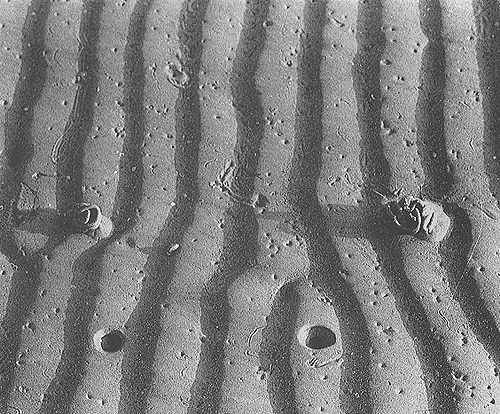
Vertical structures in shallow water: dwelling traces
Plate 149

Vertical structures in shallow water: dwelling traces
Plate 149
The rippled sand of a beach at low tide is punched by many small holes and two larger ones; a heap of sand resembling squeezed toothpaste lies beside each larger hole. The holes are the entrances of the "homes" of a cylindrical worm named Arenicola (inhabitant of the sand), while the "toothpaste" consists of sand mixed with excrements heaped over the exits. By joining each hole with the respective heap, you get the width of a U-shaped trace that extends downwards for some decimeters. The living worm is still there.
U-shaped and similar traces (Y- or I-shaped), which develop mostly in the vertical dimension, are typical of nearshore environments with a sandy bottom, subject to moderately to highly agitated water. Not only worms, but also mollusks, crustaceans and other invertebrate animals make these dwelling traces. They live in the sediment because the interface is too disturbed by water motion; on the other hand, being filter feeders, they appreciate agitated waters because of their cleanness, which prevents filtering apparatuses from being clogged. Upon the organism's death, the traces are filled by sand and can fossilize. They thus become indicators of the littoral-intertidal zone in Ancient sediments.